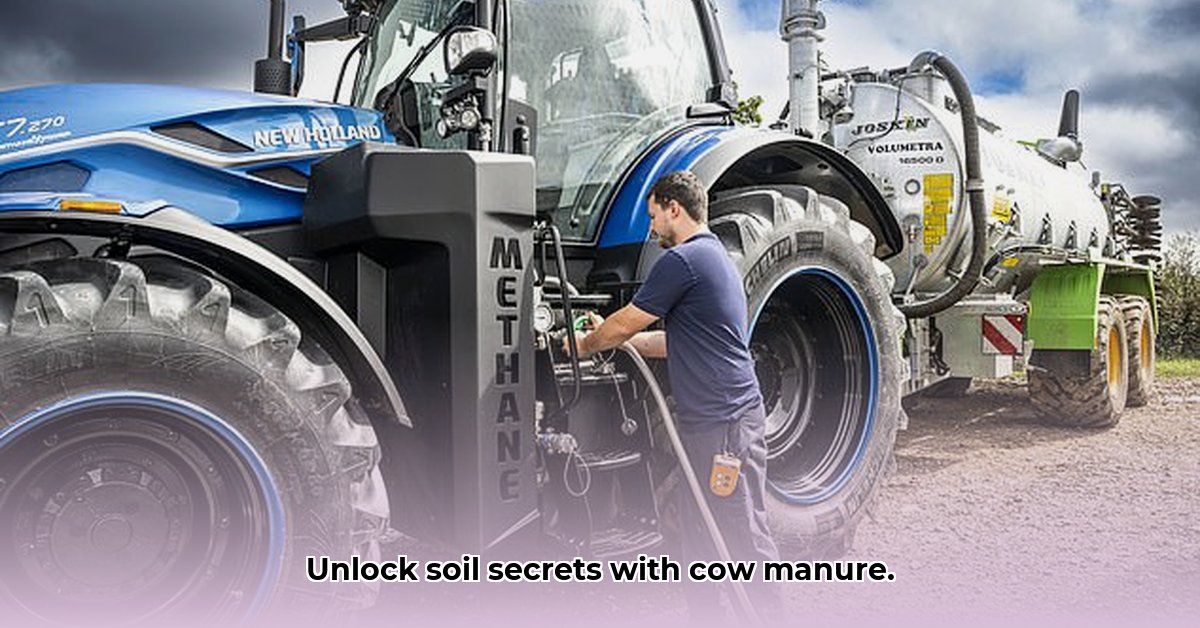
Tractor Supply Cow Manure: A Deep Dive into Soil Enrichment
Harnessing the power of cow manure from Tractor Supply offers a natural and cost-effective way to boost soil health. This isn't just about fertilization; it's about building a thriving ecosystem in your garden or farm. This guide will equip you with the knowledge to effectively utilize this readily available, eco-friendly resource, whether you're a seasoned farmer or a weekend gardener. For more information on sustainable agricultural practices, check out this useful resource.
Understanding the Benefits of Cow Manure
Cow manure acts as a slow-release fertilizer, unlike fast-acting chemical alternatives. It's a sustained source of nourishment, gradually enriching your soil. Beyond feeding your plants, it improves soil structure, allowing better water and air penetration to the roots. This fosters beneficial soil microbes—essential for healthy plant growth. However, the quality varies depending on the cow's diet, manure handling, and collection time. Therefore, understanding your source is paramount. Tractor Supply offers various types and grades, including pre-composted options. Knowing the specifics of your purchase significantly impacts results. Isn't optimizing your soil the foundation for success?
Working with Tractor Supply Cow Manure: A Practical Guide
Before you begin, follow these steps for optimal results.
Step 1: Selecting Your Manure: Choose a reputable supplier like Tractor Supply. Carefully inspect the manure; look for fresh color and texture, avoiding anything moldy or foul-smelling. Fresh manure is typically darker, while pre-composted manure is even darker and has an earthy aroma.
Step 2: Composting (When Necessary): Composting is crucial if using raw, uncomposted manure. This process eliminates weed seeds, pathogens, and potential harmful chemicals that may be present. Pre-composted manure from Tractor Supply often eliminates this step, saving time and effort. Always check the product label for details.
Step 3: Applying the Manure: Spread composted manure thinly and evenly over your garden beds. Avoid thick layers to prevent "burning" plants. Incorporate the manure into the top layer of soil for better nutrient absorption.
Step 4: Watering: After application, water thoroughly but avoid overwatering. This helps the nutrients settle and become available to your plants.
Weighing the Pros and Cons: A Balanced Perspective
While cow manure offers numerous advantages, it's essential to understand its potential drawbacks.
| Advantages | Drawbacks |
|---|---|
| Abundant in essential plant nutrients | Inconsistent nutrient content between batches |
| Improves soil structure and aeration | Potential for weed seeds and pathogens (uncomposted manure) |
| Enhances water retention | Bulky and difficult to handle; transportation costs can be high |
| Cost-effective compared to synthetic fertilizers | Requires composting time (if necessary) |
| Supports beneficial soil microbes | Strong odor, especially with fresh manure |
| Environmentally friendly and sustainable | May contain undesirable elements if improperly sourced |
How to Overcome Logistical Challenges in Using Cow Manure as Sustainable Fertilizer
Managing cow manure effectively requires addressing its inherent challenges. Raw manure is bulky, heavy, and high in moisture, impacting transportation, storage, and application.
Tackling Transportation Hurdles
The volume and weight of manure necessitate specialized equipment for transportation, increasing costs. Sourcing locally minimizes transport distances and costs. Composting substantially reduces volume and weight, simplifying handling.
Effective Storage Strategies
Proper storage prevents nutrient loss and environmental contamination. Options include composting, anaerobic digestion (generating biogas and digestate), and covered storage to protect against rain and nutrient leaching. Did you know that proper storage is crucial for maintaining nutrient value?
Optimizing Application for Maximum Results
Even with efficient transport and storage, proper application is critical. Soil testing determines the precise amount needed based on soil nutrient levels and crop requirements. Application methods include broadcasting, banding, or direct incorporation into the soil. Precision application ensures optimal results and avoids plant damage.
The Role of Technology and Policy
Technological advancements, like nutrient recovery systems and biogas production, offer solutions. Supportive government policies, such as subsidies for manure management practices, can greatly enhance adoption.
A Circular Economy Approach
Consider manure not as waste, but as a valuable resource. This approach minimizes environmental impact while maximizing resource utilization, creating a more sustainable agricultural system. Remember, sustainable practices are an investment in the long-term health of your land and our planet. What measures are you taking to promote sustainability in your gardening practice?
Key Takeaways:
- Cow manure offers significant soil enrichment benefits.
- Effective manure management is crucial for maximizing benefits.
- Technology and supportive policies facilitate widespread adoption.
- Understanding nutrient content and application methods is key to success.